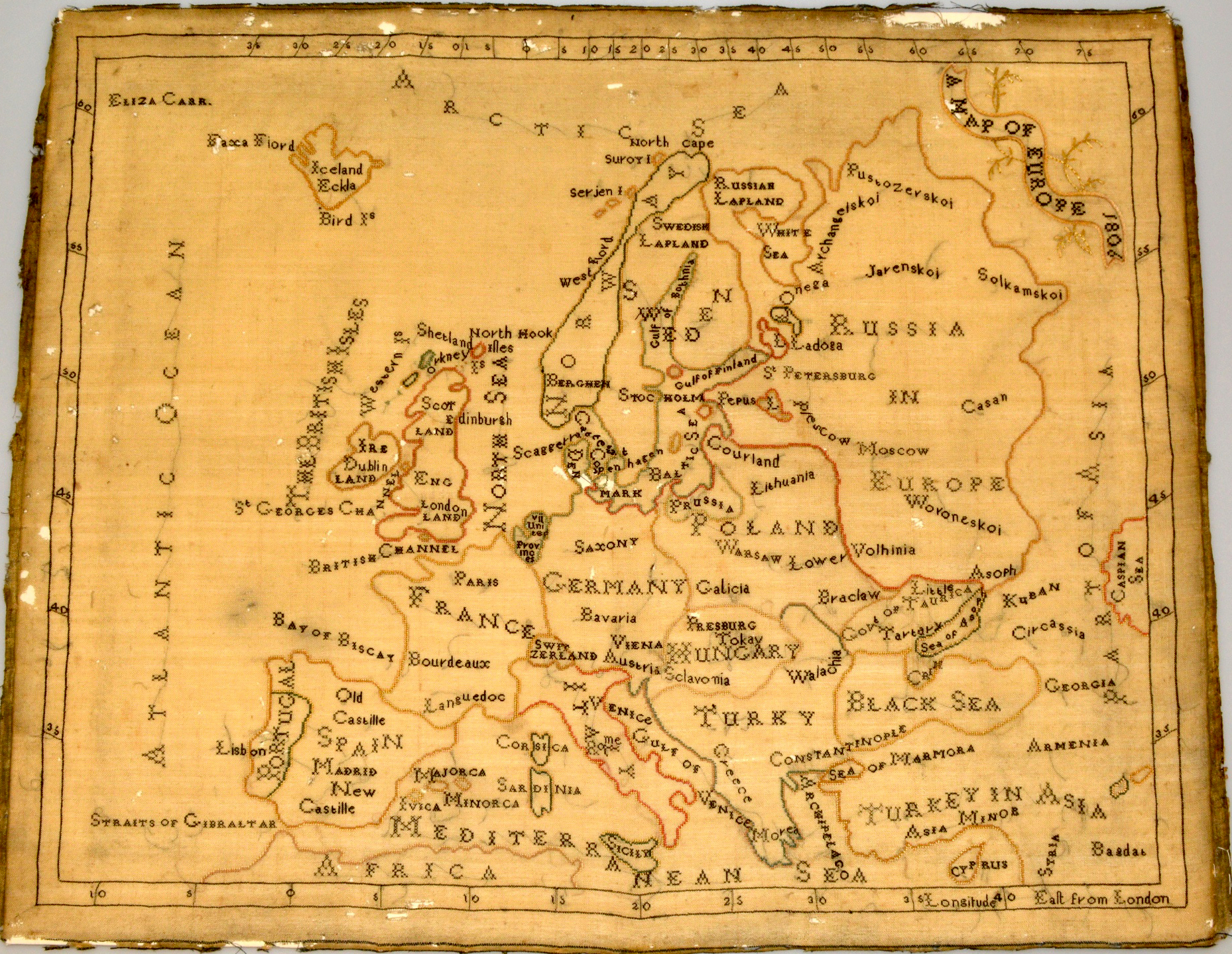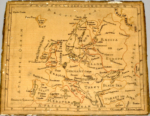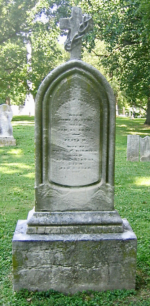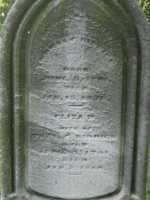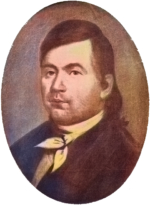Map Sampler
Maker's Name
Carr, Elizabeth Minor
Location
Lexington, Fayette County, Kentucky
Date Made
1806
Maker's Age
15 years old, born on April 5, 1791
Dimensions
20 ¼ x 26 ¼ inches
Medium
Silk on wool with cross stitches; thread count: 24/inch horizontal, 26/inch vertical
Provenance
The sampler was made by Elizabeth Minor Carr in 1806. According to The Missouri Historical Society, the sampler probably passed to her daughter, Frances Elizabeth Riddick who married Charles Pierre Billon (1803–1863) of Philadelphia, PA, (they divorced in 1854 in St. Louis, Missouri), to their daughter Virginia Gratiot Billion (1836–after 1900, born in Fayette County, Kentucky, died in St. Louis, Missouri). Virginia married John Taylor Trowbridge (1837–1922) on April 25, 1861, and they had Frank Billon Trowbridge (1865-1945). Frank married Alice Leah Schenck (1873–1910) and they had Vorhees Schenck Trowbridge (1894-1978), the donor of this sampler to the Missouri Historical Society in 1974.
Description
Elizabeth’s work, “A Map of Europe, 1806”, is an excellent example of a so called “map sampler”. Surrounded peripherally by longitude and latitude markings, the map details countries, cities, bodies of water, and regions extending from the Arctic Sea to the north and North Africa to the south, and from the British Isles, Portugal, and Spain to the west, to Russia and Part of Asia to the East.
Rare and especially rare for southern samplers, map samplers were considered an excellent way of simultaneously teaching embroidery and geography. Some were inaccurate however, as errors were made in copying the maps from textbooks of the day. Rare map samplers can be found detailing local areas, individual countries, continents (such as Elizabeth’s), and occasionally, the solar system. An excellent article is found in the Register of the Kentucky Historical Society: “Mary Beck and the Female Mind”, by Edna Talbott Whitley, which refers to Mary Beck teaching advanced subjects such as geography to her female students using “…globes, armillary spheres and an orrery brought from Philadelphia”. Ms. Beck began teaching in Lexington, Kentucky in 1805 and Elizabeth’s sampler was made in 1806. The possibility of Ms. Beck having been Elizabeth’s teacher is raised although this is currently only conjecture. Please see the full article “Mary Beck and the Female Mind”, by Edna Talbott Whitley on AKS’s KY Sampler Research page.
Elizabeth’s sampler is the only map sampler in the AKS Collection. It resembles English map samplers of the same time period, especially given its wool ground.
Elizabeth Minor Carr was born on April 5, 1791, in Lexington, Fayette County, Kentucky, when her father, Walter Chiles Carr (1753-1838), was thirty-eight years old, and her mother, Elizabeth Chiles (1755-1847), was thirty-five. Her siblings included Susan (1772-?), Charles (1774-1869), Phoebe (1777-1836), Thomas (1779-1836), Nancy (1781-1873), William C. (1783-1851), Virginia (1785-1828), Dabney (1787-1822), Hulda (1788-1852), and Walter Childs (1789-?).
Elizabeth married Thomas Fiveash Riddick (1781-1830) on August 8, 1812, in Fayette County, Kentucky. Their children included Virginia Carr Riddick (1813-1894), Frances Elizabeth Riddick (1815-1905), and Dabney Carr Riddick (1821-1900). Virginia and Frances were both born in Fayette County, Kentucky while the family had removed to Missouri by May of 1821 when Dabney was born.
Elizabeth died on January 2, 1866, in St Louis, Missouri, at the age of seventy-four, and was buried there in the Bellefontaine Cemetery. (See the the gravestone of Elizabeth and Thomas Riddick in the ancillary images.)
Elizabeth’s husband, Thomas Fiveash Riddick was born into a prominent political family in Virginia and was a St. Louis pioneer. (See his portrait [age unknown] in the ancillary images.). He first came to St. Louis in 1804, about the time Louisiana became a part of the United States. He played a prominent part in the social organization of the new community. In 1806 he was appointed clerk of the Board of Commissioners of Land Claims and assisted in settling the titles to lands in Upper Louisiana. Riddick proceeded to Washington in 1812 and had a bill introduced and passed in Congress conveying all unclaimed lots in St. Louis and adjacent villages to the common school, securing for the schools property from which the St. Louis School Board derived a large revenue. In the organization of the first Legislature of the Territory in 1812 he acted as Clerk Protem of the House and in the same year was appointed by President Monroe as a member of the legislative council of the Territory. In 1820 he was a member of the convention which framed the Constitution under which Missouri was admitted into the Union. He also served the city for many years as alderman and justice of the peace. He was the lay organizer and first senior warden of Christ Church, now Cathedral. He was one of the incorporators of the Bank of St. Louis, the first bank established in the Territory and was president of the Territorial Bank of Missouri in 1820. The charter of the first lodge of Free Masons in St. Louis was granted to Riddick as senior warden. In 1821 Colonel Riddick assisted in the organization of the Grand Lodge of Missouri and was elected its first grand master.
Rare and especially rare for southern samplers, map samplers were considered an excellent way of simultaneously teaching embroidery and geography. Some were inaccurate however, as errors were made in copying the maps from textbooks of the day. Rare map samplers can be found detailing local areas, individual countries, continents (such as Elizabeth’s), and occasionally, the solar system. An excellent article is found in the Register of the Kentucky Historical Society: “Mary Beck and the Female Mind”, by Edna Talbott Whitley, which refers to Mary Beck teaching advanced subjects such as geography to her female students using “…globes, armillary spheres and an orrery brought from Philadelphia”. Ms. Beck began teaching in Lexington, Kentucky in 1805 and Elizabeth’s sampler was made in 1806. The possibility of Ms. Beck having been Elizabeth’s teacher is raised although this is currently only conjecture. Please see the full article “Mary Beck and the Female Mind”, by Edna Talbott Whitley on AKS’s KY Sampler Research page.
Elizabeth’s sampler is the only map sampler in the AKS Collection. It resembles English map samplers of the same time period, especially given its wool ground.
Elizabeth Minor Carr was born on April 5, 1791, in Lexington, Fayette County, Kentucky, when her father, Walter Chiles Carr (1753-1838), was thirty-eight years old, and her mother, Elizabeth Chiles (1755-1847), was thirty-five. Her siblings included Susan (1772-?), Charles (1774-1869), Phoebe (1777-1836), Thomas (1779-1836), Nancy (1781-1873), William C. (1783-1851), Virginia (1785-1828), Dabney (1787-1822), Hulda (1788-1852), and Walter Childs (1789-?).
Elizabeth married Thomas Fiveash Riddick (1781-1830) on August 8, 1812, in Fayette County, Kentucky. Their children included Virginia Carr Riddick (1813-1894), Frances Elizabeth Riddick (1815-1905), and Dabney Carr Riddick (1821-1900). Virginia and Frances were both born in Fayette County, Kentucky while the family had removed to Missouri by May of 1821 when Dabney was born.
Elizabeth died on January 2, 1866, in St Louis, Missouri, at the age of seventy-four, and was buried there in the Bellefontaine Cemetery. (See the the gravestone of Elizabeth and Thomas Riddick in the ancillary images.)
Elizabeth’s husband, Thomas Fiveash Riddick was born into a prominent political family in Virginia and was a St. Louis pioneer. (See his portrait [age unknown] in the ancillary images.). He first came to St. Louis in 1804, about the time Louisiana became a part of the United States. He played a prominent part in the social organization of the new community. In 1806 he was appointed clerk of the Board of Commissioners of Land Claims and assisted in settling the titles to lands in Upper Louisiana. Riddick proceeded to Washington in 1812 and had a bill introduced and passed in Congress conveying all unclaimed lots in St. Louis and adjacent villages to the common school, securing for the schools property from which the St. Louis School Board derived a large revenue. In the organization of the first Legislature of the Territory in 1812 he acted as Clerk Protem of the House and in the same year was appointed by President Monroe as a member of the legislative council of the Territory. In 1820 he was a member of the convention which framed the Constitution under which Missouri was admitted into the Union. He also served the city for many years as alderman and justice of the peace. He was the lay organizer and first senior warden of Christ Church, now Cathedral. He was one of the incorporators of the Bank of St. Louis, the first bank established in the Territory and was president of the Territorial Bank of Missouri in 1820. The charter of the first lodge of Free Masons in St. Louis was granted to Riddick as senior warden. In 1821 Colonel Riddick assisted in the organization of the Grand Lodge of Missouri and was elected its first grand master.
Owner/History of Owner/Credit Line
Courtesy of the Missouri Historical Society, St. Louis, Missouri
AKS Catalog Number
2021-093
Sources
Ancestry.com
FamilySearch.org
Findagrave.com
Mohistory.org
“Mary Beck and the Female Mind”, by Edna Talbott Whitley, The Register of the Kentucky Historical Society, Vol. 77, No. 1 (Winter 1979), pp. 15-24 (10 pages), Published By: Kentucky Historical Society.
FamilySearch.org
Findagrave.com
Mohistory.org
“Mary Beck and the Female Mind”, by Edna Talbott Whitley, The Register of the Kentucky Historical Society, Vol. 77, No. 1 (Winter 1979), pp. 15-24 (10 pages), Published By: Kentucky Historical Society.
Explore Sampler
